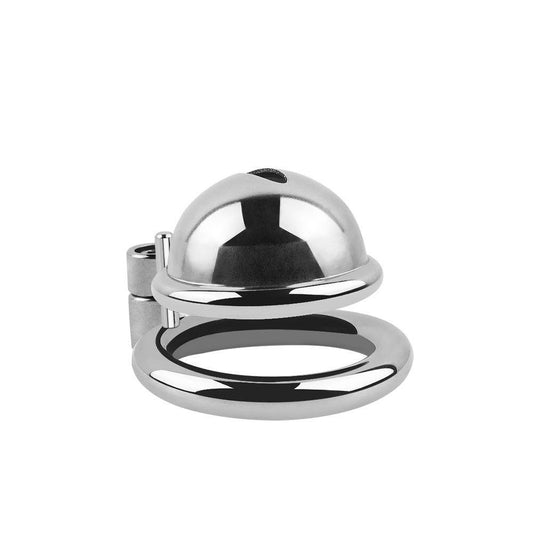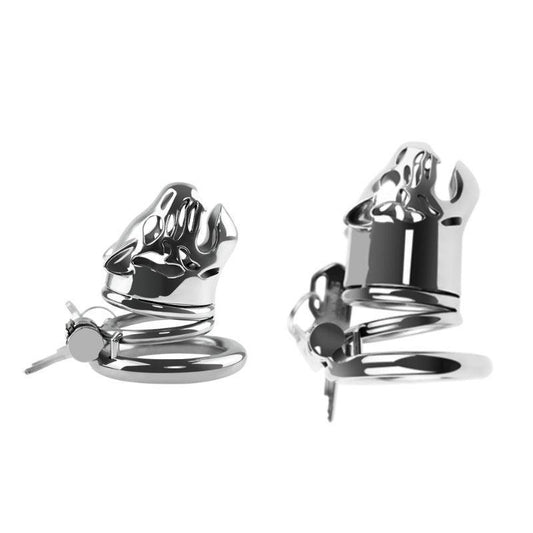Chastity cages, devices designed to restrict sexual activity, are becoming an increasingly popular choice for people seeking to explore new dimensions of their sexuality, self-discipline, or relationship dynamics. While the concept may seem unusual to some, chastity play can offer a variety of benefits depending on the user’s goals—whether physical, emotional, or psychological. In this post, we’ll explore the different reasons why people choose to use chastity cages, shedding light on the underlying motivations that drive this practice.
1. Sexual Self-Discipline and Control

One of the most common reasons people use chastity cages is to practice sexual self-discipline. For individuals who feel they engage in excessive or compulsive sexual behavior, such as frequent masturbation, using a chastity cage can be a way to regain control over their sexual urges. This self-imposed restriction allows individuals to break free from habits they may feel are distracting or unhealthy, offering an opportunity for personal growth.
Psychological Impact: Reinforcing Control
- The act of locking oneself in a chastity cage requires a commitment to control one’s sexual behavior. From a Cognitive Behavioral Therapy (CBT) perspective, the device acts as a form of behavioral modification. By restricting access to pleasure, the wearer can reduce the frequency of sexual urges or "bad habits," such as masturbation. Over time, this may enhance self-control and provide a sense of empowerment or accomplishment.
- Additionally, for those who identify with Type-A or dominant personalities, the experience of taking control over one's sexual impulses can provide a psychological boost. Chastity can be an outlet for channeling personal energy into productive activities rather than acting on spontaneous urges, creating a more focused and disciplined approach to life.
2. Sexual Tension and Delayed Gratification

For many people, one of the most compelling reasons to use a chastity cage is the heightened sense of sexual tension it creates. When access to sexual pleasure is denied, the wearer often experiences intense feelings of desire and arousal. This prolonged period of sexual denial can make the eventual release—whether from the keyholder or as a personal decision—far more rewarding and pleasurable. The anticipation and buildup of sexual energy can increase sexual satisfaction once the device is finally removed.
Psychological Impact: The Pleasure of Denial
- This concept of delayed gratification taps into deep psychological mechanisms. The dopamine system, which governs pleasure and reward, becomes activated as the wearer anticipates sexual release. The longer the period of denial, the more powerful the eventual release can feel. For some, this heightened tension can lead to a deeper emotional or physical connection with their partner when the moment of release finally arrives.
- The experience of being locked in a chastity cage can create a psychological contrast between pleasure and restraint, which some people find profoundly erotic. In fact, this dynamic can foster a stronger bond between partners, as it brings shared experiences of trust, intimacy, and anticipation.
3. Exploring Power Dynamics in Relationships

Chastity cages are often used as part of BDSM (bondage, discipline, dominance, submission, sadism, and masochism) or D/s (dominance and submission) dynamics. In these relationships, the chastity cage becomes a tool for controlling or restricting sexual behavior. The keyholder, typically the dominant partner, holds the power to decide when and if the cage is removed, creating a strong power imbalance that is central to the relationship.
Psychological Impact: The Desire for Power and Surrender
- For those interested in power exchange, the use of a chastity cage is an effective way to assert control or give up control. The act of submitting to a keyholder and surrendering one’s sexual autonomy can evoke deep emotional responses—feelings of vulnerability, trust, and sometimes humiliation—while for the dominant partner, it reinforces a sense of control and authority.
- Psychodynamic theory suggests that power exchange in relationships can be an expression of unconscious needs. For the submissive, giving up control might be a way to experience a sense of release from responsibility, while for the dominant, exercising control can provide a psychological sense of validation, authority, or strength.
- This dynamic can be further explored through Transactional Analysis (TA), where individuals act in one of three ego states: Parent, Adult, or Child. In chastity play, the submissive may enter the "Child" ego state, characterized by vulnerability and the desire for nurturing or guidance, while the dominant partner takes on the "Parent" role, offering structure, control, and decision-making authority.
4. Enhanced Intimacy and Connection

For some couples, using a chastity cage is a way to enhance intimacy and deepen the emotional connection between partners. By creating a situation where sexual release is delayed or controlled, the focus shifts from immediate physical gratification to a deeper emotional bond. This can help strengthen trust, intimacy, and communication between partners.
Psychological Impact: Building Trust Through Vulnerability
- The keyholder’s control over sexual release necessitates a level of emotional vulnerability that can foster a greater sense of closeness and trust. For the person wearing the cage, surrendering their sexual autonomy to a partner can feel like an act of deep trust. In return, the dominant partner assumes a great responsibility in maintaining that trust, as the keyholder is often the one who must ensure that the experience is consensual, safe, and enjoyable.
- Attachment theory suggests that emotional bonds are strengthened when one partner feels safe and supported by the other. Chastity play, by introducing a form of dependency (on the keyholder for release), can intensify feelings of emotional closeness and attachment, provided that both partners are committed to open communication and mutual respect.
5. Heightening Fetishistic Desires and Sexual Exploration

For some individuals, using a chastity cage is a way to indulge in a particular fetish or sexual fantasy. Chastity devices are often featured in role-playing scenarios where the wearer is locked up as part of a scenario of control or sexual denial. For those with a chastity kink, the cage itself becomes an object of sexual desire, representing sexual restraint, vulnerability, and eroticism.
Psychological Impact: The Role of Fetishes
- Fetish theory posits that objects or actions become sexualized due to associations formed over time. In the case of chastity cages, the association between the device and sexual control, frustration, or anticipation can create a deeply ingrained fetish for the object itself. This can lead to an ongoing desire to use the cage as part of sexual play.
- The experience of wearing a chastity cage may also contribute to the exploration of other fetishes or desires, expanding the individual’s understanding of their own sexual identity. For some, it may represent a gateway into exploring more extreme forms of BDSM or power exchange relationships.
6. Medical or Therapeutic Reasons

In rare cases, people may use chastity cages for medical or therapeutic reasons, such as helping to break free from compulsive sexual behaviors or as part of a treatment for certain sexual dysfunctions, like premature ejaculation or excessive masturbation. The device may serve as part of a structured plan designed to control or manage sexual impulses.
Psychological Impact: Behavioral Change and Sexual Health
- Chastity can serve as a tool for sexual rehabilitation, providing an external restraint to help individuals break patterns of excessive sexual behavior. For those looking to reset their sexual habits, the use of a chastity cage can be an effective behavioral modification technique.
- In some cases, individuals may seek out chastity as a form of sex therapy, where they work with a therapist to address issues such as sexual addiction or compulsivity. The cage can become part of a holistic approach to improving overall sexual health and behavior.
Conclusion: Why Do People Use Chastity Cages?
People use chastity cages for a variety of personal, emotional, and psychological reasons. Whether for self-discipline, exploring power dynamics, enhancing intimacy, or indulging in fetishes, chastity play can offer profound rewards for those who choose to engage in it. The use of a chastity cage is not just about physical restraint—it’s about emotional control, trust, and the exploration of power and vulnerability within relationships.
For some, the device represents a path to greater self-awareness and sexual fulfillment, while for others, it’s a way to explore new facets of their sexual identity. Ultimately, the reasons behind why people use chastity cages are as varied as the individuals who choose to incorporate them into their lives, reflecting the complex and deeply personal nature of human sexuality.
Looking to explore chastity play or find the perfect chastity cage? Visit lockedmenclub.com, where we offer a wide range of high-quality chastity cages designed for comfort, security, and enhanced pleasure. Shop today and take the first step in your chastity journey.








